Category Archives: Surveys and Opinion Polls

Setting up a robust Linguistic Quality Assurance process for your tests and assessments on a low budget
Andrea Ferrari, cApStAn co-founder You are going to administer a test or questionnaire in multiple countries, cultures, and languages. We don’t need to convince you that the reliable validation of translated data collection instruments requires a robust Linguistic Quality Assurance (LQA) design. A design that focuses on equivalence, comparability as well as appropriateness in each …
Read More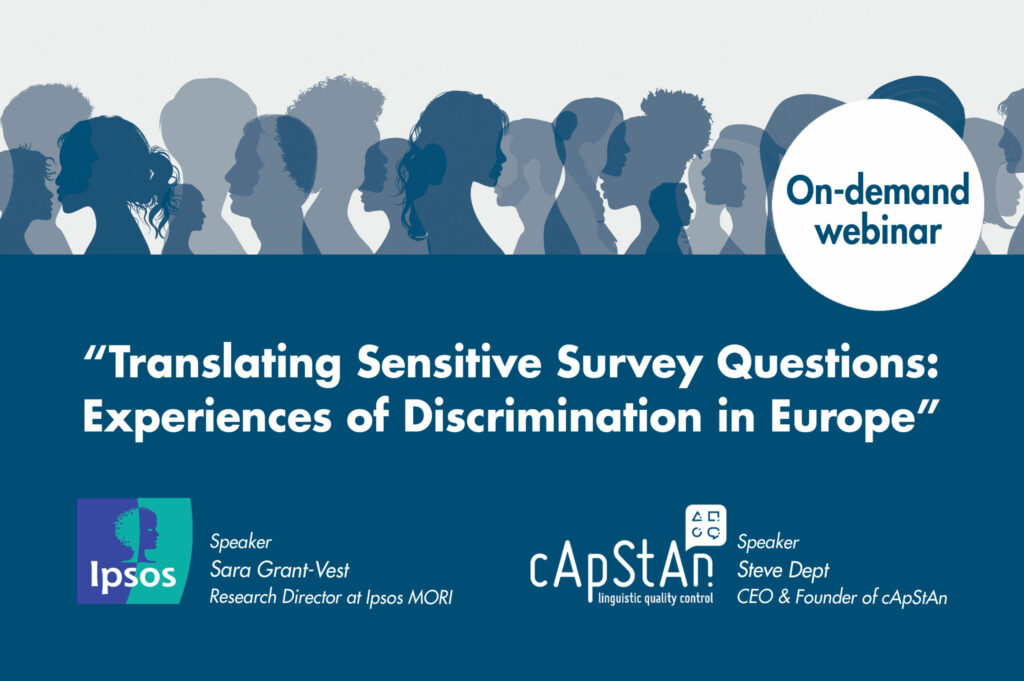
Translating Sensitive Survey Questions: Experiences of Discrimination in Europe
EU-MIDIS II, the EU’s 2nd Minorities and Discrimination Survey, provides an interesting case study of a close and successful collaboration between the FRA, the EU Agency for Fundamental Rights, the survey organisation Ipsos MORI, and cApStAn LQC. The aim of the EU-MIDIS cycle of surveys is to assist EU institutions and policy makers in developing …
“Translating Sensitive Survey Questions: Experiences of Discrimination in Europe”
Read More
On-Demand Webinar | Disentangling Proficiency in Programming from Proficiency in English: Codility Meets cApStAn
Codility is the #1 rated recruitment platform for developers, helping world-class companies the likes of Microsoft, Intel and American Express to assess candidate programmers via skills-based coding tests. The tests are administered in English, but often the candidates are not native English speakers. Hence the “pain point” identified by Codility: a too high level of …
Read More
How can you create culturally fair content for tests and surveys?
by Marielle Lerner – Localization Specialist Lost in adaptation If you are involved with the production of international surveys or assessments, you have likely observed the “lost in translation” phenomenon in action. On the other hand, you may have never heard the expression “lost in adaptation”, something that we at cApStAn are always thinking about …
“How can you create culturally fair content for tests and surveys?”
Read More
Adequate communication is essential to guarantee health and safety at work: this poses an additional challenge when you have a multilingual workforce
by Pisana Ferrari – Branding and Social Media Manager Foreign-born workers may face language barriers that compromise their ability to understand training materials, signage, safety and hazard alerts as well as verbal instructions, and can potentially increase their risk of on-the-job injury. Languages also have different dialects, and workforces can include people with different literacy …
Read More
Why Documentation of the Survey Translation Process is Crucial and How to Do It
by Elica Krajceva – Senior Project Manager, Cross-cultural Survey Specialist Is it necessary and worth your time to keep a record of all important steps in a survey translation process? The answer is – yes, it is absolutely essential! Read on to find out the benefits of documentation. Survey documentation is an important part of …
“Why Documentation of the Survey Translation Process is Crucial and How to Do It”
Read More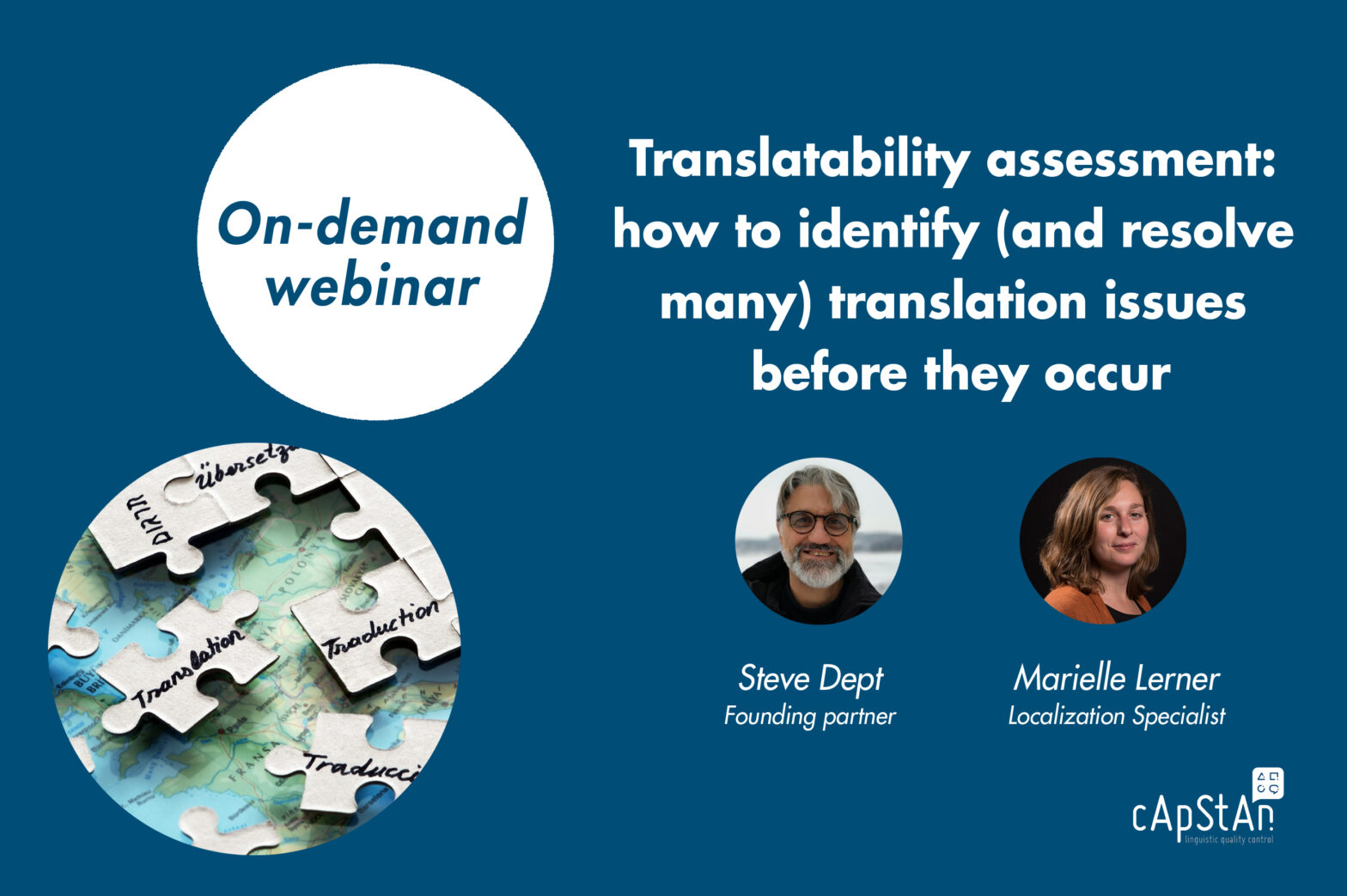
On-Demand Webinar |Translatability Assessment
A translatability assessment (TA) is a tried and tested method to optimize the master version of your assessment or survey questionnaire before the actual translation and adaptation process begins. In many multilingual tests or surveys—not only PISA or PIAAC or Pew Research Center’s Global Attitudes Project—the TA has become an important design step. The TA process increases …
“On-Demand Webinar |Translatability Assessment”
Read More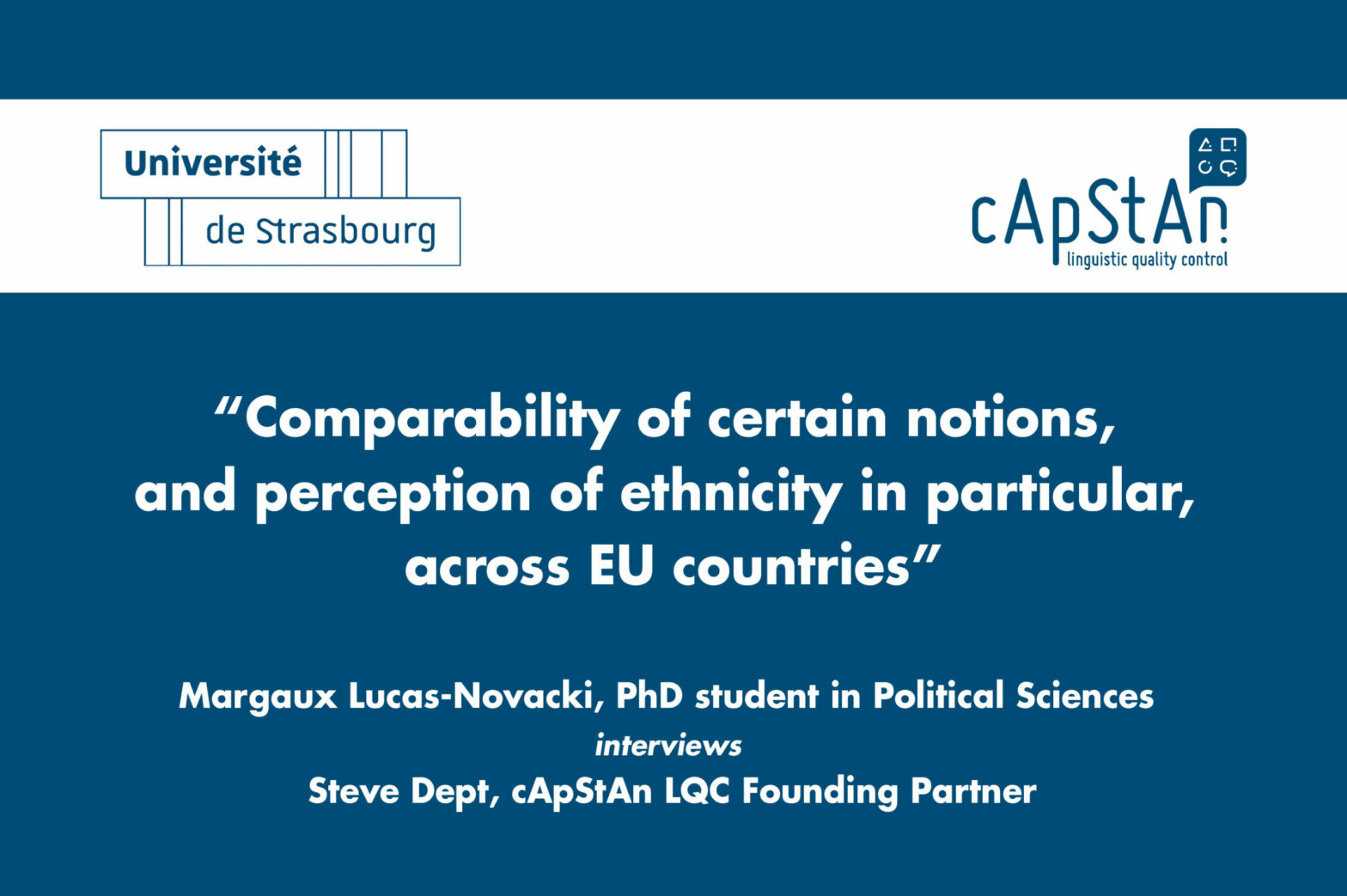
Comparability of certain notions, and perception of ethnicity in particular, across EU countries
Recently, Steve Dept, cApStAn’s founding partner and director of strategic partnerships was interviewed by Margaux LUCAS-NOWACKI, PhD student in political sciences, University of Strasbourg. The session was very informative and we thought of sharing the questions and answers with everyone in the survey localisation space. Could you describe the whole process of translating a survey …
“Comparability of certain notions, and perception of ethnicity in particular, across EU countries”
Read More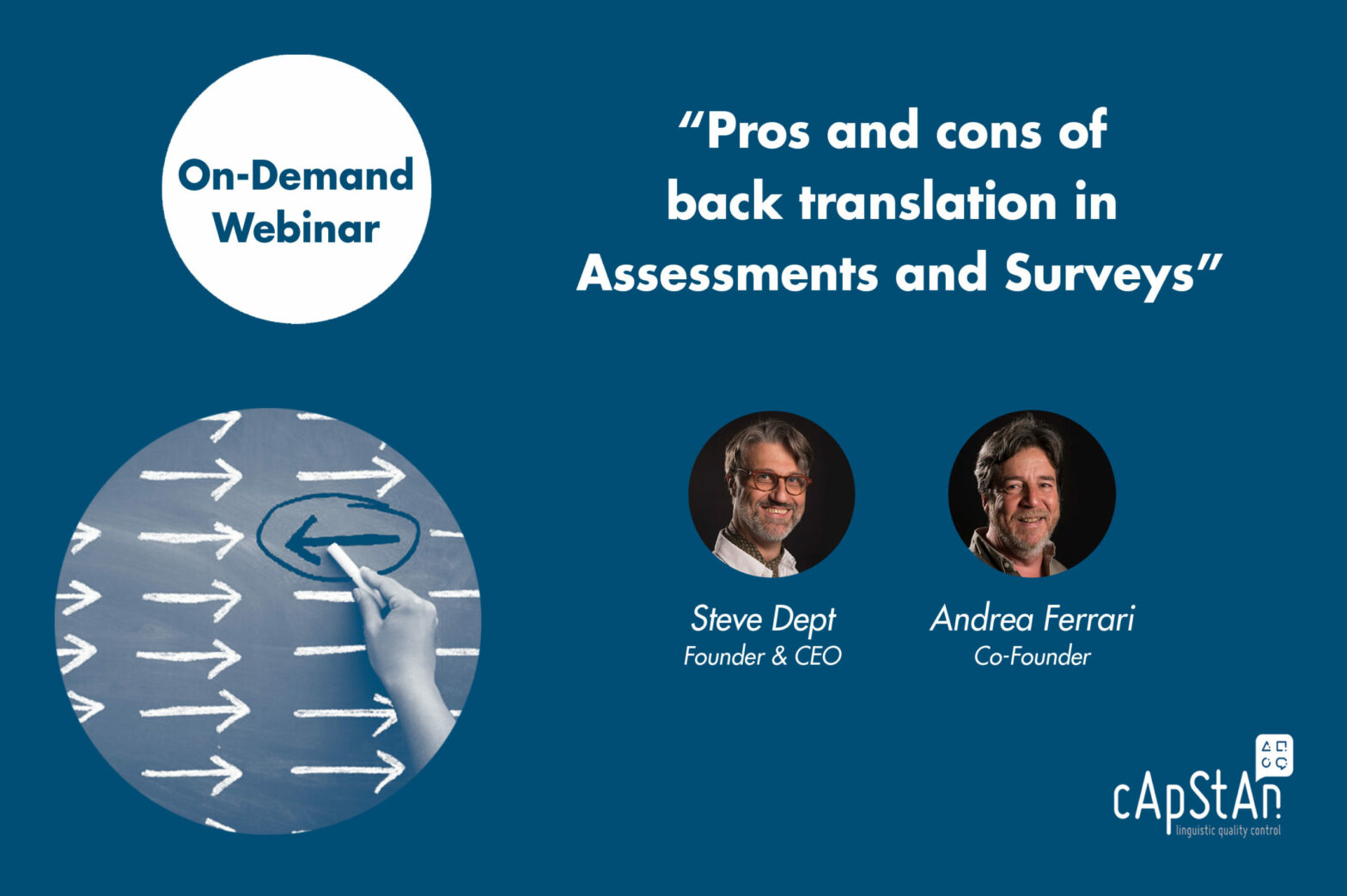
On-Demand Webinar| Pros and cons of back translation in assessments and surveys
Pros and cons of back translation in assessments and surveys A webinar by Andrea FERRARI and Steve DEPT, the founders of cApStAn Linguistic Quality Control. In 45 minutes, they will tell you everything you always wanted to know about back translation but never dared to ask such as: Telling examples from international studies – for which Andrea and Steve were commissioned …
“On-Demand Webinar| Pros and cons of back translation in assessments and surveys”
Read More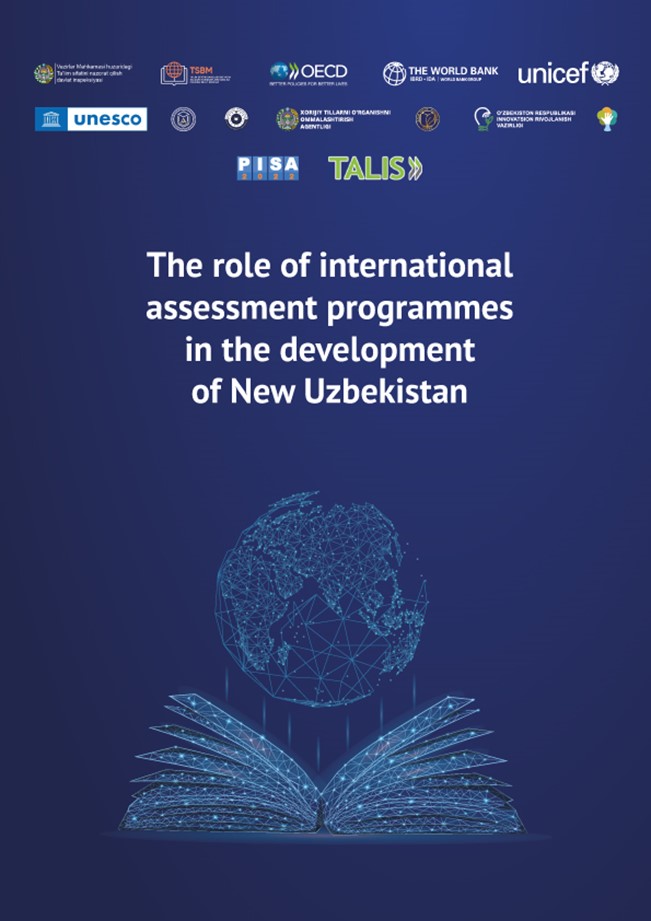
PISA launch event in Uzbekistan | Translation of PISA Assessments – the Gold Standard within reach of National Centers
The State Inspectorate for Supervision of Quality in Education (SISQE), Uzbekistan in collaboration with the Ministry of Public Education, National Center for International Studies on the Assessments of Quality in Education, OECD, UNICEF, World Bank, UNESCO are organizing a in-person/virtual hybrid conference on 11-12 April, 2022 to launch and commemorate Uzbekistan’s participation in PISA 2022 …
Read More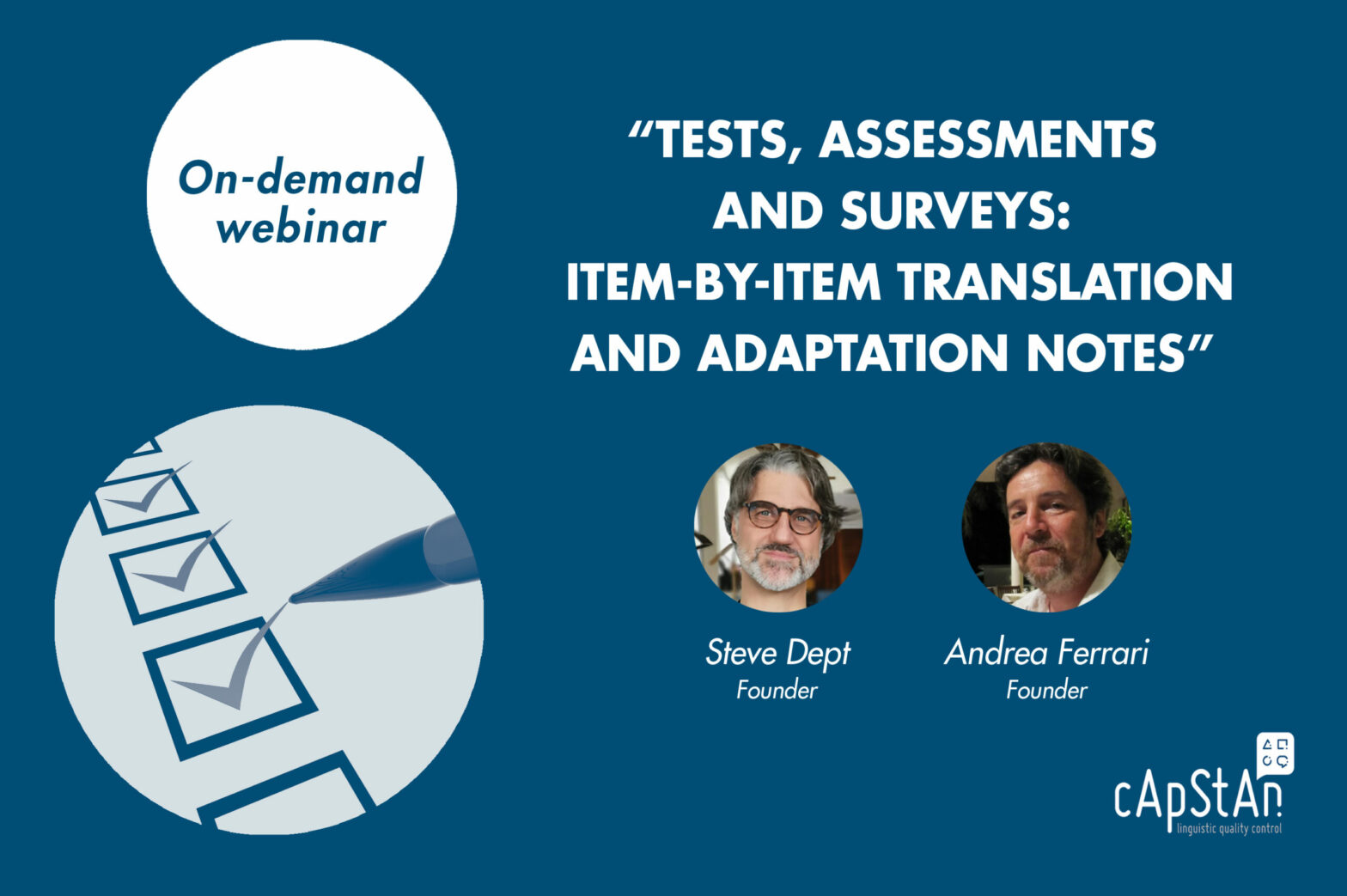
On-Demand Webinar – Tests, Assessments and Surveys: Item-by-item translation and adaptation notes
You need to deploy a test or questionnaire in multiple countries and languages? The reliable validation of translated data collection instruments requires—among other things—a robust QA design. A design that focuses on equivalence, comparability as well as appropriateness in each target culture. Based on +20 years of experience as LQA practitioners, Steve and Andrea profess …
“On-Demand Webinar – Tests, Assessments and Surveys: Item-by-item translation and adaptation notes”
Read More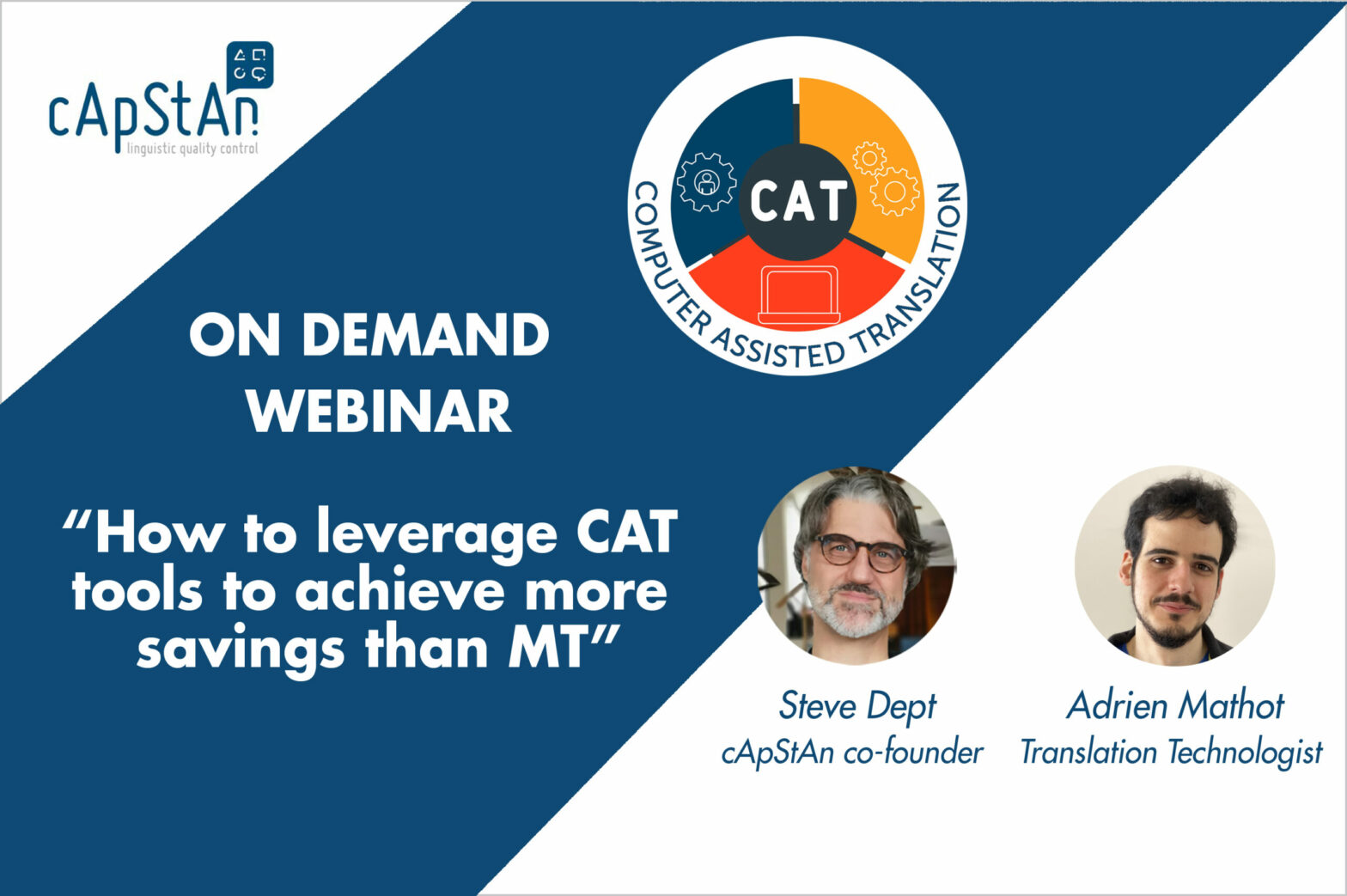
On-Demand Webinar | How to leverage CAT tools to achieve more savings than MT
Computer-assisted translation tools (CAT tools) have been around for 30 years, and they are designed as productivity tools for professional translators. Using CAT tools effectively increases quality, consistency and productivity at scale. Term bases, style guides and translation memories form a powerful combination that (still) give the human translator a competitive edge in terms of quality/price …
“On-Demand Webinar | How to leverage CAT tools to achieve more savings than MT”
Read More